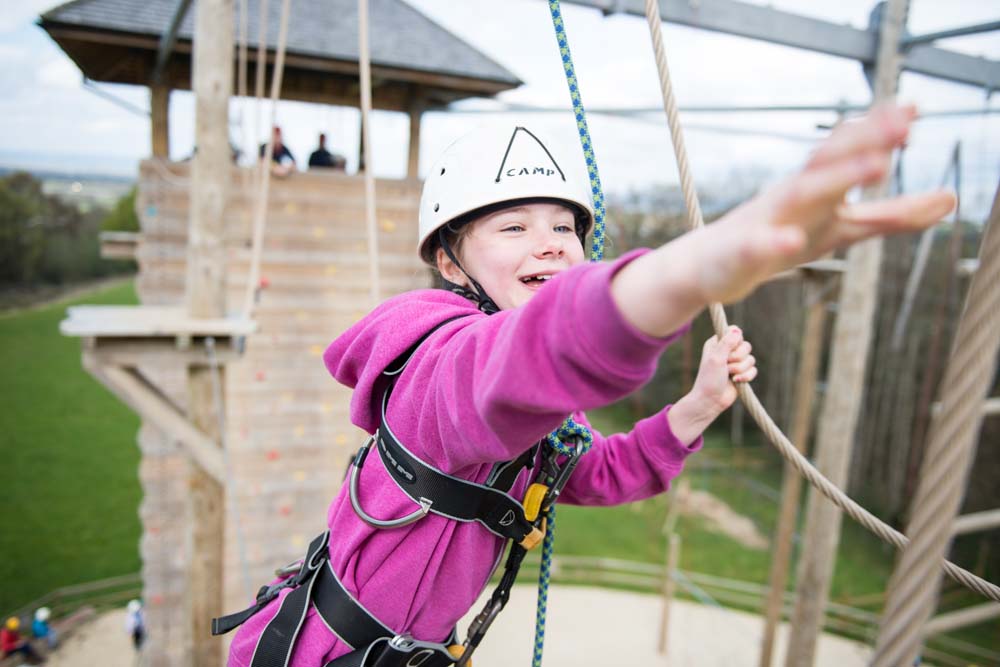
We prepare young people with skills for life. But this also needs to happen in a safe environment. This page contains resources, risk assessments and guidance for our volunteers to help them provide that safe environment where our Scouts’ safety comes first.
As part of our programme, we regularly teach our young people how to be safe, in real life and online, through badges, resources, videos and in instructions with particular activities.
Some of these resources and videos can be found on the Scouts website here.
If you find anything that is out of date, contact us at [email protected] and we’ll get it sorted for you.
Safety Policy
We adhere to the Scouts’ Safety Policy. Scouting should be provided in a safe manner without risk to health, so far as is reasonably practicable. We believe this is just as important as running the activity itself.
Responsibility
The Group Board of Trustees must satisfy itself that the policy is being followed, holding the Group Scout Leader to account. They are also responsible for ensuring the HQ is safe (POR 2.5.2.5).
The Group Scout Leader, Steven Osborn, is responsible for ensuring that volunteers within the group are properly trained for their role and the correct enquiries have been made and that accidents are investigated. Furthermore he must ensure all volunteers are supported with their responsibilities and that the Safety policy is followed completely. (POR 2.5.2.4)
Everyone is responsible to stop any activity if they have concerns about its safety, follow the emergency procedures, risk assess all activities and share best practice in all areas of safety (POR 2.5.2.2).
The leader in charge of any activity is responsible to ensure that activity is run safely in line with the Safety policy. (POR 2.5.2.3)
Risk assessments
Risk Assessing is one way in which we run safe activities and keep our HQ in good order. As part of their training, Leaders complete these assessments for any activity they take part in.
When we risk assess, we must share what we find with others. Therefore, the sharing of written risk assessments is the best way. These should be reviewed before every activity and as often as needed during the activity. (POR 2.5.1.4)
To help with these, there is a general risk assessment for use of the HQ. These are updated each year and it the Group Board of Trustees must assure themselves this has been carried out.
Paper copies can be found in the kitchen in the HQ Safety Folder and online versions can be found below.
HQ Risk Assessment
Contains full details of common risks to injury found in the hall and what the group does to minimise these risks and what more can be done to reduce these risks further. Defects to the building or its contents should be recorded to the Group Scout Leader as soon as possible.
It is the responsibility of all section leaders and leaders of groups using the hall to:
- read this risk assessment and follow its instructions,
- carry out their own risk assessments for specific activities carried out within the HQ building and grounds,
- follow the rules of the hall that exist for its users safety, such as stacking chairs in the areas and heights requested, keeping escape routes clear etc.,
- report any defects to the fabric of the building or its contents immediately and make safe.
Last updated: March 2024
This risk assessment was made with reference to the Scouts guidance on the Managing a Safe Scout Premises pages and Tree Safety Guidelines (FS320008).
Fire Risk Assessment
We are required, by law under the Regulatory Reform (Fire Safety) Order 2005, to have a fire risk assessment. This considers the causes of fire in the HQ, and the risk to the users of the hall should a fire begin.
Our risk assessment includes both a record of significant findings, defects noticed during the risk assessment process, and context and emergency procedures, which provides information about the HQ and what we have in place to tackle any fires and to evacuate the users of the hall.
It is the responsibility of all section leaders and leaders of groups using the hall to:
- read this plan,
- tell their members about the evacuation plan,
- complete an evacuation drill at least once a year.
Last updated: March 2024.
This risk assessment was made with reference to the Scouts fact sheet Managing Fire Safety (FS320007) and documents issued by the government to help with completing a fire risk assessment. These are Regulatory Reform (Fire Safety) Order 2005: A Short Guide to Making Your Premises Safe From Fire and Fire safety risk assessment: small and medium place of assembly. Paper copies of the government documents are available in the cleaning cupboard.
Working at Height Risk Assessment
Working at height happens a lot in Scouts, but it is a much riskier activity than many believe.
Risk assessments for this covers the use of the stepladders, the ladder onto the balcony, as well as carrying objects while on a ladder. In general, items should not be stored at height unless there are measures in place to store it safely.
It is the responsibility of users of the hall to read this assessment and follow its instructions.
Last updated: March 2024.
This risk assessment was made with reference to the Scouts fact sheet Falls from Height (FS320009) and documents issued by the Health and Safety Executive: Working at height: A brief guide and Safe use of ladders and stepladders: A brief guide.
Manual Handling Risk Assessment
Moving items is something that happens often in Scouts and can cause unnecessary injury if not done properly. Many of our volunteers will have received training through their workplace, but it is important we ensure it is done correctly.
It is the responsibility of users of the hall to read this assessment and follow its instructions.
Last updated: March 2024.
This risk assessment was made with reference to the Scouts guidance on Lifting and Carrying and documents issued by the Health and Safety Executive: Manual handling at work: A brief guide
Control of Substances Hazardous to Health (COSHH)
It is important that anything that could potentially be harmful is controlled correctly. At present risk assessments and safety data sheets have been provided for all the cleaning substances that any section has access to in the cleaning cupboard.
Paper copies of these are available in the C.O.S.H.H. folder located in the cleaning cupboard.
If other substances are located in other locked locations around the HQ then it is the leader’s responsibility to ensure that they have been properly assessed.
Last updated March 2024.
Guidance is completed referring to the Scouts advice on the Chemicals and hazardous substances page and the advice from the Health and Safety executive on this topic. These are Working with substances hazardous to health: A brief guide to COSHH, Diluting chemical concentrates: COSHH essentials for service and retail (SR2), Manual cleaning and disinfecting surfaces: COSHH essentials for service and retail (SR4), Ready-for-use insecticide sprays and dusts: COSHH essentials for service and retail (SR7), Storing chemical products (small scale): COSHH essentials for service and retail (SR24), Controlling cooking fumes: COSHH essentials for service and retail (SR27).
Asbestos Register
The HQ’s asbestos register can be found in the HQ Safety Folder in the kitchen. It contains the location of all known Asbestos Containing Materials (ACMs) in the HQ as well as some specimens that were tested and returned false.
All ACMs are labelled as such, but the register should be checked prior to any work to determine if any ACMs may exist. They are also visually inspected periodically to ensure there is no additional damage to them. If you are carrying out any major work on the building, the register should be check first to ensure no accidental damage.
This register was made with reference to the Scouts fact sheet Managing Asbestos.
Food Safety
All users of the hall who provide food have responsibilities to handle food safely. As the food handled will vary depending on the different sections, each section should complete their own risk assessment for food as no users handle food on a regular basis.
Users should refer to the guidance in the Scouts factsheet Food Safety in Scouting (FS320003)
While food labelled with allergen information, in line with Natasha’s Law, is not required for Scout fundraising events, the group requests allergen information about bakes and food sold at our fundraising events in line with guidance from the Food Standards Agency.
First Aid needs assessment
It is important to have the right medical equipment for our activities. This First Aid needs assessment covers the equipment we believe is required for any user of the hall and which we maintain for the use of all.
All of our sections maintain their own first aid kits for their normal activities and there are additional kits for nights away from the HQ. This assessment does not cover these additional kits as their contents will vary depending on the activity being undertaken.
Last updated: March 2024.
This needs assessment was made with reference to the Scouts fact sheet First Aid Kits (FS140048).
Using the Automated External Defibrillator (AED)
Thanks to a kind donation from within our community, our HQ is equipped with an Automated External Defibrillator (AED). It is easy to use and has simple visual and spoken instructions.
Users of the hall can watch this video on YouTube to find out how to use the AED.
